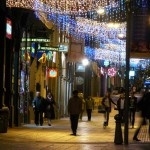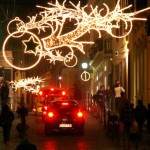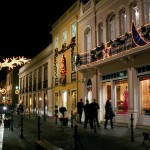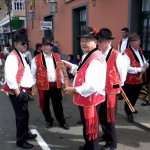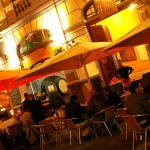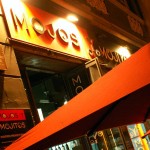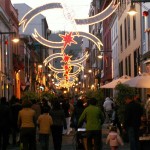Culture
The three biggest influences in this culture are: family, friends and food. Tinerfeños, as they are known, never refuse a get together; they are more likely to make an excuse in order to meet up.
FOODIt has been estimated that there are over 2000 local bars in Tenerife! They offer a selection of authenitic Canarian cuisine as well as the more traditional Spanish tapas. POTATOES:Canarian potatoes are very flavoursome and have been grown here for centuries (since the 1700s and 1800s). One traditional Canarian recipe is wrinkled potatoes with olive oil & parsley sauce known as “mojo”. Don’t ever criticise olive oil in the presence of a spaniard or you’ll be attacked (verbally but vehemently). OTHER DISHES:The main Canarian dishes are fish soups & light vegetable stews (called “potaje” here). Meats include chicken, pork, rabbit and goat; these are often cut into pieces, fried and served with homemade potato chips (“carne fiesta”). “Gofio” is a well known staple food consisting of ground corn kernels; slowly mixed into hot milk, it’s usually eaten that way for breakfast. It can also be sprinkled into soups and stews, but quickly makes them thick & gluggy if you add too much. It’s got the honorable reputation for imparting incredible strength to those that eat it (a bit like spinach does elsewhere). If Popeye the sailorman was Canarian, he’d be eating this all the time… LOCAL CHEESES:Goat and sheep cheese (and mixtures of the two) are also suprisingly tasty; the best place to buy those is in Teno Alto and Arico. FRUIT:The citrus & tropical fruits are also worth a mention. Any type of citrus fruits grow amazingly well here (oranges, mandarins, lemons, grapefruit). Although not native, there are some strange tropical fruits such as the prickly pear, khaki, loquats, papaya, cherimoya, mangos, kiwis, avocados and guavas. And who can forget the infamous Canarian banana? COFFEE:Coffee is also an institution in Spain, typically served in very small cups or glasses. Locals often ask for a “cortado natural”, the more adventurous can order a “leche leche” (it comes with a layer of horribly sweetened condensed milk sludge in the bottom). “Café solo” means an expresso. The other great local style of coffee is a “barraquito”, similar to a leche-leche but with the addition of Licor 43 and cinnamon! WINE:It’s customary for Spanish people to consume a small glass of red or white wine with their meal. Spain actually dedicates 42% more land area to wine production than Italy and 36% more than France. Of the Canary Islands, Tenerife is by far the biggest producer of wine. Look for local brands of wine with the following “Denominaciones de origen” (designation of origin): Tacoronte Acentejo, Valle de La Orotava, Ycoden – Daute – Isora, Abona, and finally Valle de Güímar. Red grapes (actually more of a deep purple/black colour) are more common than green grapes; they’re used to make red wine (called “tinto”), but you can also eat them by themselves too! Due to the uneven terrain, to this day, none of the grapes in Tenerife are machine harvested. What happens instead is that once a year, usually around September or October, each farmer calls upon their friends and family to help with “the cosecha”. Every single bunch of grapes is hand picked. “Many hands make light work” as they say, and all the grapes are harvested in a single day. Some vineyards produce their own wine which they then sell in local Guachinches. The original idea of a Guanchinche is a small establishment offering a simple 3 course menu to enable growers to sell their own surplass wine. FIESTASFiestas are a big part of Tenerife Life. It is commonly said that the municipality of Los Realejos has the most holidays in the entire kingdom of Spain (and Spain has more holidays than any other country in the European Union!). There are many fiestas -too many to list here. The most well-known are: “noche San Juan” in Puerto de la Cruz which celebrates the Summer solstice; Corpus Christi culminating with the sand carpets in La Orotava; Tenerife is also home to the second biggest Carnaval in the world, in Santa Cruz (second only to the one in Rio de Janeiro). |
|

